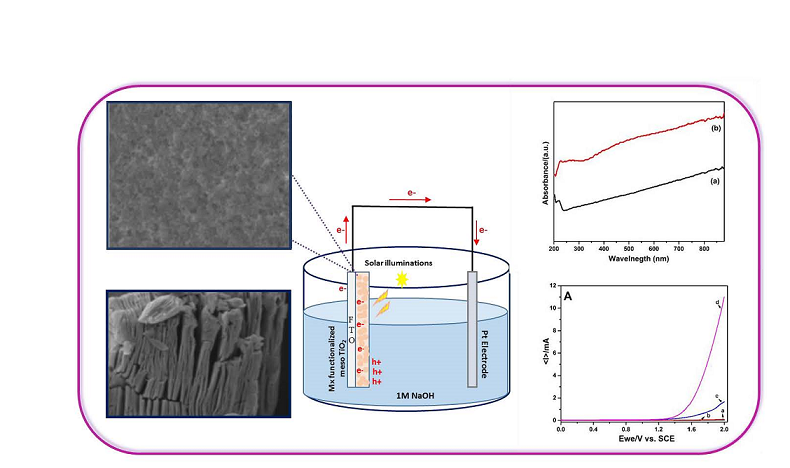Article
Version 1
Preserved in Portico This version is not peer-reviewed
Investigation and Optimization of Mxene functionalized Mesoporous Titania Films as Efficient Photoelectrodes
Version 1
: Received: 24 September 2021 / Approved: 28 September 2021 / Online: 28 September 2021 (09:52:21 CEST)
A peer-reviewed article of this Preprint also exists.
Iqbal, A.; Hamdan, N.M. Investigation and Optimization of Mxene Functionalized Mesoporous Titania Films as Efficient Photoelectrodes. Materials 2021, 14, 6292. Iqbal, A.; Hamdan, N.M. Investigation and Optimization of Mxene Functionalized Mesoporous Titania Films as Efficient Photoelectrodes. Materials 2021, 14, 6292.
Abstract
Three-Dimensional mesoporous TiO2 scaffolds of anatase phase possess inherent eximious optical behavior that are beneficial in designing photoelectrodes for solar energy conversion applications. However, substantial efforts have been devoted in maximizing the UV and/or visible light absorption efficiency, and suppressing the annihilation of photogenerated charged species in pristine mesoporous TiO2 structure for improved solar illumination conversion efficiencies. This study provides the fundamental insights into Mxene functionalized mesoporous TiO2 as photoelectrode for the first time. This novel combination of Mxene functionalized TiO2 electrodes with and without TiCl4 treatments have been successfully optimized to intensify the process of photon absorption, charge segregation and photocurrent, resulting in superior photoelectrode performance. The photocurrent measurements of prepared photoelectrodes are significantly enhanced upon increased contents of Mxene due to improved absorption efficiency within the visible region as verified by UV–Vis absorption spectroscopy. Moreover, as evident through structural analysis, the anatase phase of TiO2 is well grown due to increased contents of Mxene and post-deposition heat treatments. Consequently, an appreciable coverage of well-developed grains on FTO surface observed in SEM images. Thereby, the newly fabricated conductive mesoporous TiO2 photoelectrodes are potential candidates for photoinduced energy conversion and storage purposes.
Keywords
Transition Metal Carbides; Power Conversion Efficiency (PCE); Surface Plasmon Resonance (SPR); Photocatalyst; Mxene; Photoelectrodes; Titania
Subject
Chemistry and Materials Science, Nanotechnology
Copyright: This is an open access article distributed under the Creative Commons Attribution License which permits unrestricted use, distribution, and reproduction in any medium, provided the original work is properly cited.
Comments (0)
We encourage comments and feedback from a broad range of readers. See criteria for comments and our Diversity statement.
Leave a public commentSend a private comment to the author(s)
* All users must log in before leaving a comment








